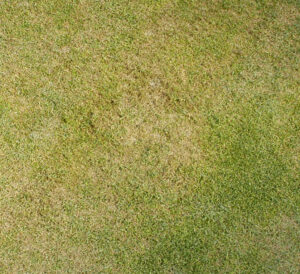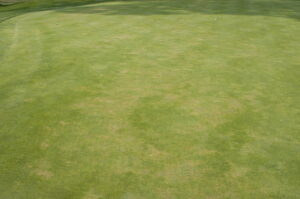Main Content
Several golf courses in the tri-state area have reported symptoms of etiolation and decline of creeping bentgrass putting greens. In some cases, the etiolation has occurred in isolated areas and then disappeared, but in other situations etiolation has progressed into a gradual decline of affected turf. Patches can range from 1 to several inches in diameter and may coalesce into large areas of blighted turf. Repeated isolations has yielded a number of bacterial species including Acidovorax and infected turf has often exhibited pronounced bacterial streaming from cut leaf tissue. Annual bluegrass on these greens has been unaffected by this problem.

Although little is known about the etiology and control of etiolation and bacterial decline of turf, it appears to be stress related with the recent heat wave acerbating the problem. Anecdotal evidence from superintendents who have combated etiolation and decline suggests that recovery is encouraged by: (1) raising the height of cut, switching from heavy to light weight mowers, reducing rolling (not mowing) frequency, and using solid rollers on mowers, (2) hand syringing to avoid soil moisture extremes (particularly drought stress), (3) stopping the use of vegetative plant growth regulators (such as Primo) or reducing the rate and/or increasing the interval between applications, (4) avoiding the use of ammoniacal fertilizers (e.g., ammonium sulfate) in favor of nitrate-based sources during symptom expression, (5) avoiding heavy topdressing applications during hot weather (> 90°F) and dispersing bunker sand on greens each day (e.g., with a back pack blower prior to mowing), (6) delaying aerification, spiking, or other cultivation practices until the problem subsides, (7) reducing shade, and (8) improving air circulation around greens to reduce the leaf wetness period.
Currently, there do not appear to be any really effective chemical treatments for the control of etiolation and bacterial decline on bentgrass. Junction and other copper-based fungicides have provided limited control and can burn turf during hot weather. In some cases, Daconil Action has increased the quality of affected turf, but has not provided outstanding control of bacterial decline. Antibiotics (e.g., Mycoshield) have given little suppression of outbreaks during hot weather, can be very phytotoxic, and are not labeled for use on turf. ZeroTol (a surface disinfestant) has appeared to reduce symptom severity on some courses when applied every 2 to 4 days, but has not controlled bacterial infections. Until more research is conducted on this emerging problem, the best course of action is to reduce plant stress and avoid practices that cause excessive wounding of turf, particularly during periods of environmental stress.

